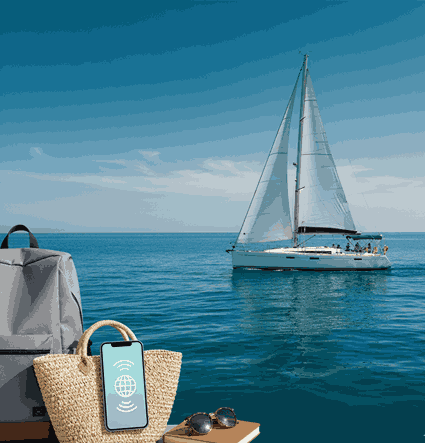While you’re scraping ice off your windshield and layering sweaters, there’s a whole world of warm destinations where you could be sipping coconut water in 85-degree weather.
From floating markets to pink sand beaches, each destination offers something that’ll make your Instagram followers seriously jealous. Time to trade your winter boots for flip-flops.
1. Bali, Indonesia: Start Every Morning with Beachfront Yoga
Picture rolling out your mat on soft sand, waves lapping just feet away, while a Balinese instructor guides you through sun salutations as the tropical sun rises over the ocean. This isn’t your typical studio class.
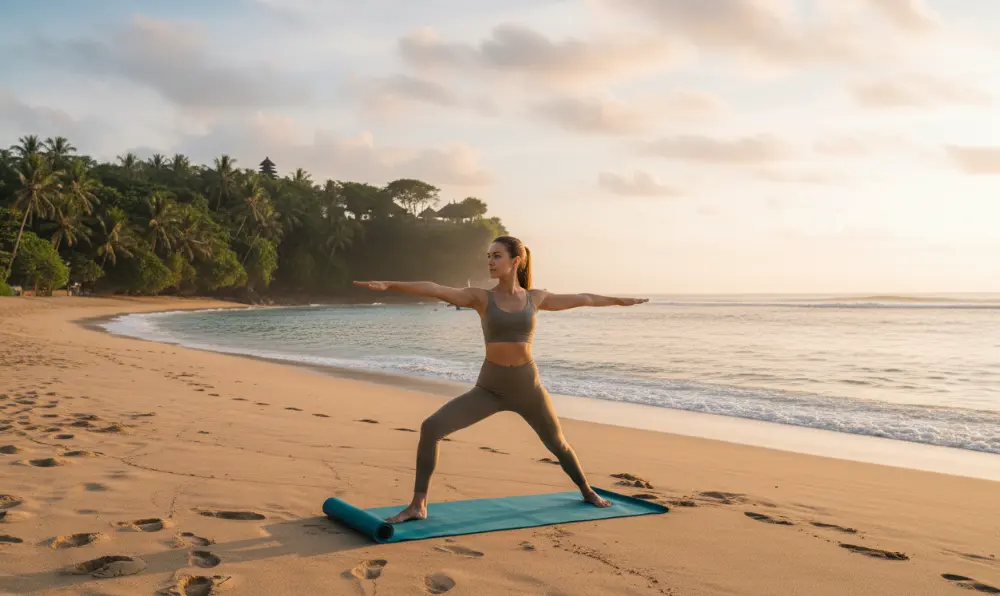
Bali’s yoga scene runs deep beyond the poses. The beachfront studios in Canggu and Seminyak cost about $10 per class, and you’re literally stretching while watching surfers catch their morning waves. The sound of the ocean becomes your soundtrack.
Best months to visit: December through April avoid the rainy season. The island stays consistently warm at 84°F, but you’ll want to skip June through August unless afternoon showers don’t bother you.
“The combination of ocean breeze, warm sand, and expert instruction creates a yoga experience you simply can’t replicate at home.” – Local instructor Made Sari
The rice terraces turn emerald green during the rainy season, so there’s beauty in every season. But for perfect beach yoga weather, book your trip between January and March.
2. Tulum, Mexico: Swim in Hidden Cenotes at Sunrise
Imagine descending wooden steps into a limestone cave where crystal-clear water reflects stalactites, and you’re the only person swimming in this underground cathedral. That’s what cenotes offer when you arrive early.
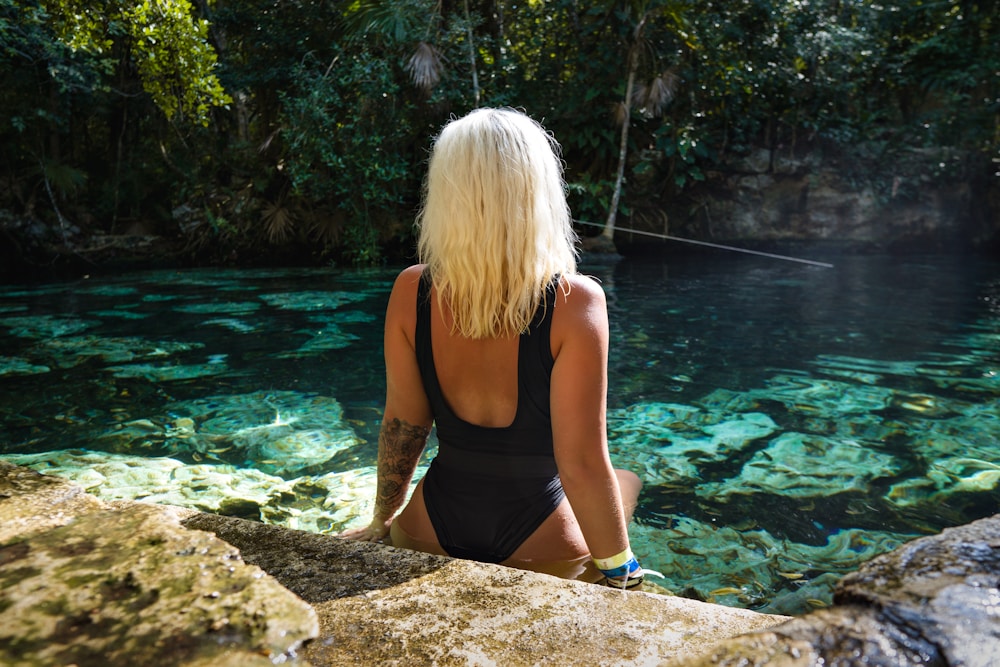
These natural swimming pools formed when limestone caves collapsed and filled with fresh water thousands of years ago. Gran Cenote and Dos Ojos are the most famous, but showing up at sunrise means you’ll have them mostly to yourself.
While New York shivers at 28°F in January, Tulum maintains a perfect 82°F year-round.
Tip
Book cenote tours through local operators rather than resort concierges. You’ll pay half the price and get more personalized attention.
Entry costs around $15 per cenote, and many offer snorkeling gear rentals. The water stays a consistent 77°F no matter what time of year you visit.
3. Vietnam: Cruise Through Floating Markets at Dawn
Gliding through misty canals while vendors in conical hats sell fresh pineapples and noodle soup from their boats creates an experience that feels like stepping into another century. The energy is infectious.
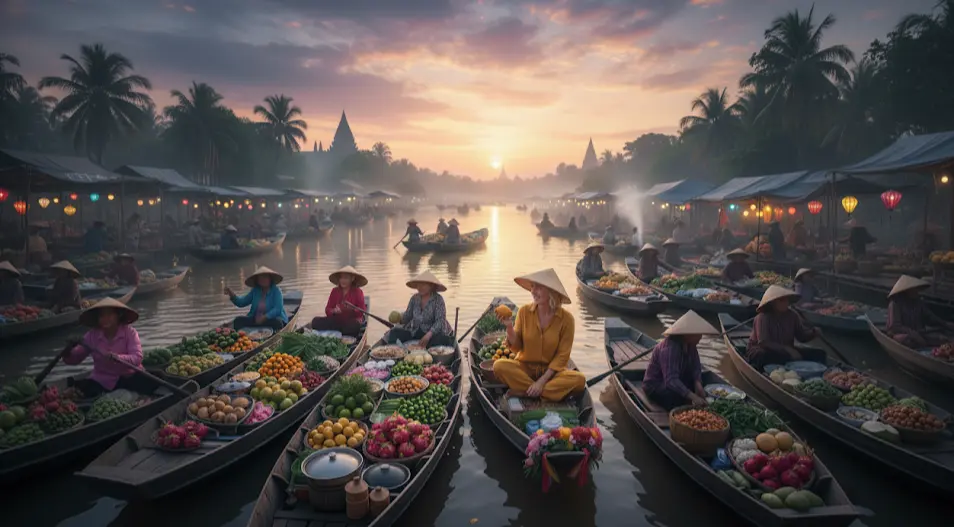
The Mekong Delta’s floating markets are organized chaos at its finest. Cai Rang market starts at 5 AM when vendors hang samples of their goods on tall poles to advertise what they’re selling from boat to boat.
A day tour costs about $25 and includes the boat ride, market visit, and usually lunch at a local family’s house. The early morning mist makes everything look like a watercolor painting.
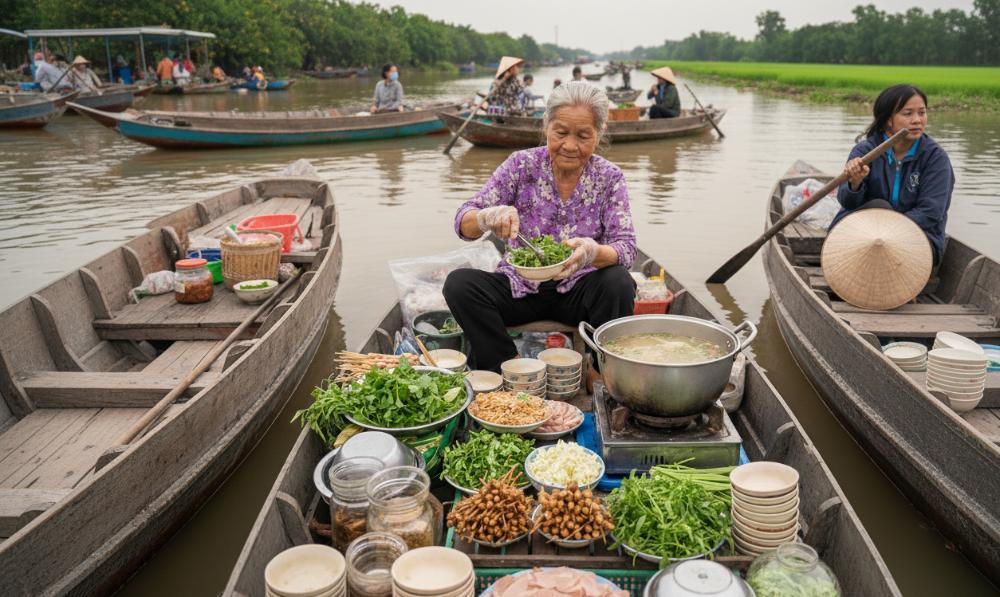
The best part? You can eat breakfast on the water. Vendors serve steaming bowls of pho right from their floating kitchens while you drift past fruit orchards and rice paddies.
Vietnam stays warm at 86°F while Boston freezes at 35°F in December.
4. Costa Rica: Zip-Line Through Cloud Forest Canopies
Flying through misty treetops at 40 mph while monkeys swing in branches below and exotic birds call from every direction delivers an adrenaline rush unlike anything you’ll find at home.
Monteverde’s cloud forest zip-lining isn’t just about speed and thrills.
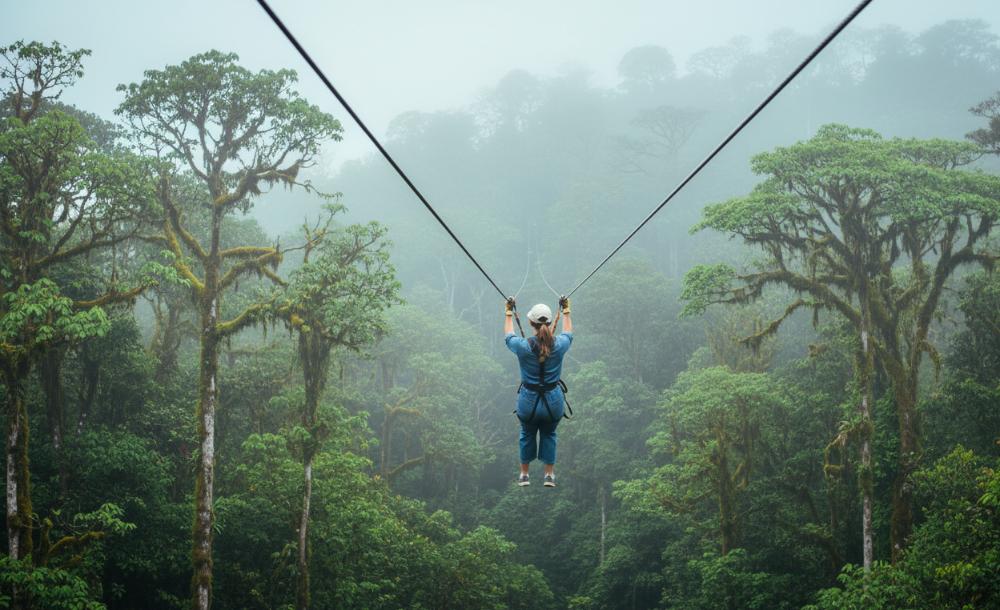
You’re soaring through one of the world’s most biodiverse ecosystems, home to over 400 bird species and countless mammals you’ll never see anywhere else.
The canopy tours cost around $45 and last 2-3 hours. Some operators offer night tours, during which you may spot sloths and other nocturnal wildlife that hide during daylight hours.
| Activity | Price | Duration | Best Time |
|---|---|---|---|
| Day Zip-line | $45 | 2-3 hours | 8 AM – 10 AM |
| Night Tour | $55 | 2 hours | 6 PM – 8 PM |
| Combined Package | $85 | 5 hours | Full day |
The platforms are built around massive trees that are hundreds of years old. Standing on these wooden decks, surrounded by mist and jungle sounds, feels like being in a different world entirely.
5. Morocco: Get Lost in Marrakech’s Colorful Maze Markets
Wandering through narrow alleyways bursting with rainbow-colored textiles, brass lanterns, and the intoxicating scent of tagines cooking in hidden courtyards engages every sense at once.
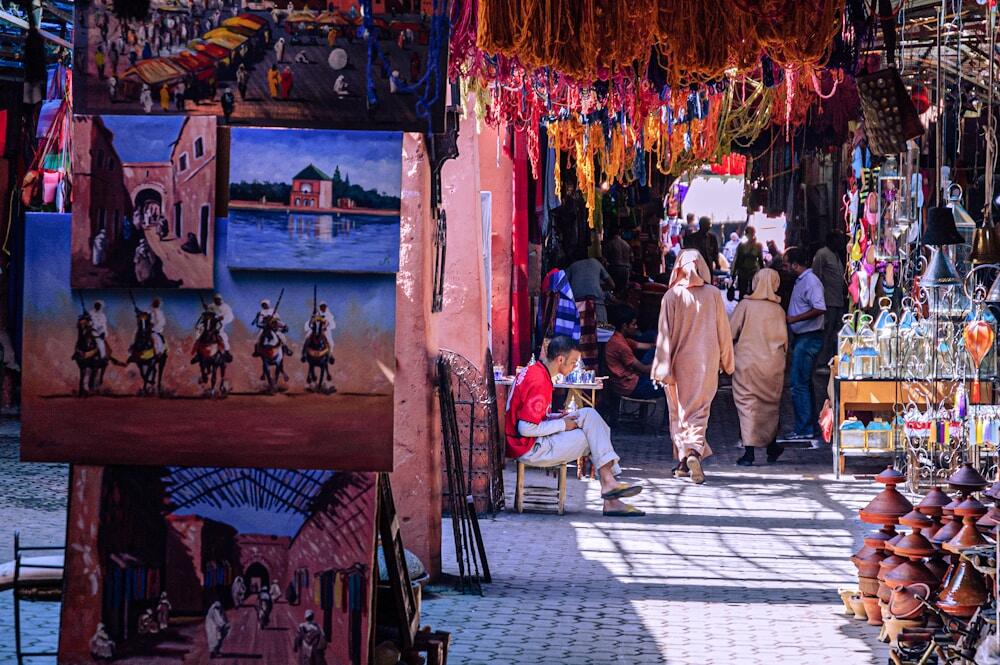
The Marrakech souks are designed to overwhelm you in the best possible way. You will get lost—that’s entirely the point. Every wrong turn leads to discovering hand-woven carpets, carved wooden boxes, or a tiny café serving mint tea that tastes like liquid sunshine.
Bargaining strategy on Marrakech markets
Start at about 30% of the asking price and work your way up. The back-and-forth negotiation is considered part of the social experience, not just commerce.
The covered walkways keep you cool even when temperatures reach 75°F outside. Compare that to Minneapolis, where February temperatures drop to 15°F, and you’ll understand why Morocco feels like paradise.
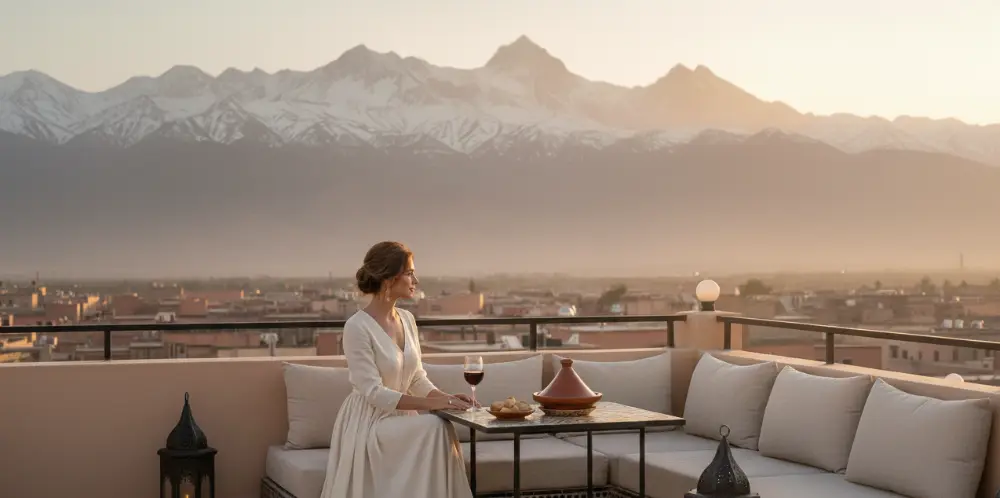
The rooftop restaurants offer incredible views of the Atlas Mountains while you eat tagines that have been slow-cooking all day.
6. Thailand: Get $5 Massages on Pristine White Beaches
A skilled Thai masseuse working out all your stress knots while you listen to waves crash on powder-soft sand and feel tropical breeze on your skin represents ultimate relaxation at an unbeatable price.
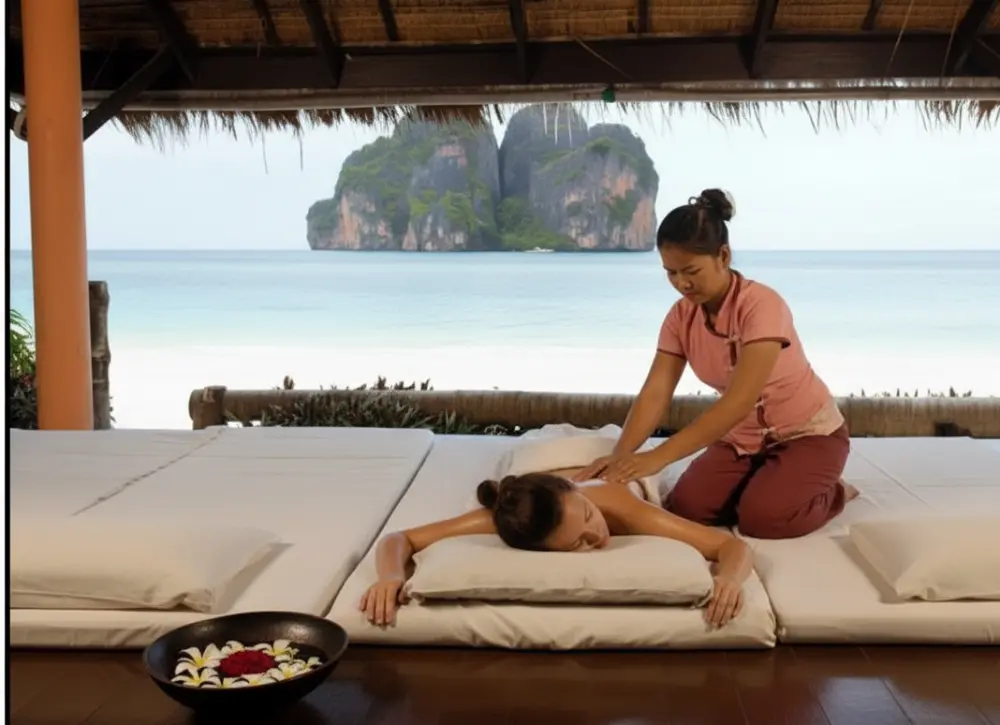
Thai beach massages aren’t just cheap — the quality is extraordinary. A 1-hour traditional Thai massage on the beach costs around $5-7, and these masseuses train for years to perfect techniques passed down through generations.
Best locations to get a massage in Thailand
Koh Phi Phi and Railay Beach offer the most stunning backdrops, with limestone cliffs rising dramatically from crystal-clear water. The beaches are so white they practically glow.
“I’ve had $200 massages in fancy spas that didn’t come close to what I experienced on a Thai beach for $6.” – Frequent traveler Sarah Chen
The massage huts are simple bamboo structures right on the sand. You fall asleep to the sound of waves and wake up feeling like a completely new person.
7. Maldives: Sleep in an Overwater Villa Above Coral Reefs
Your bedroom floor features a glass panel where tropical fish swim beneath your feet, and you can jump directly from your deck into warm, crystal-clear lagoons without taking a single step on land.
Overwater bungalows were invented in the Maldives, and nowhere else executes this concept quite as perfectly. The water is so transparent you can see 100 feet down, and living coral reefs thrive directly beneath your villa.
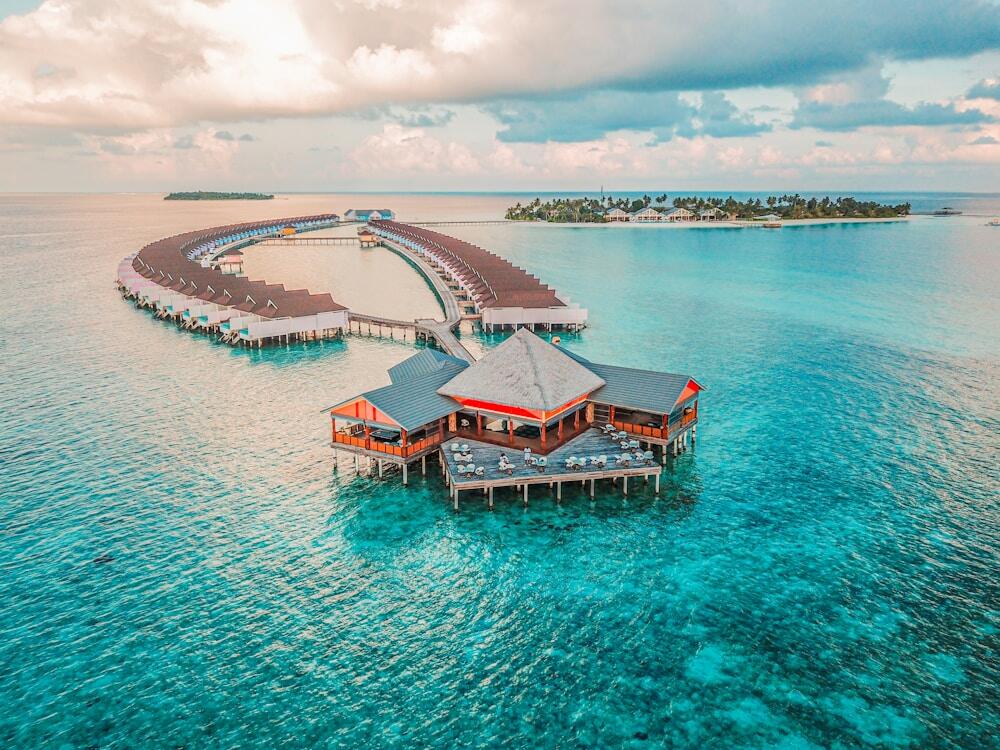
While luxury resorts can cost thousands per night, local guesthouses on inhabited islands offer overwater experiences starting around $200/night. Many include snorkeling gear and dolphin watching tours.
The best part happens at night when you turn on the underwater lights. Tropical fish gather beneath your villa like you’re watching a private aquarium show.
8. Barbados: Dance to Steel Drums on Pink Sand Beaches
Your toes sink into rose-colored sand that gets its unique hue from tiny crushed coral and shells, while steel drum bands play infectious rhythms that make it impossible to stand still.
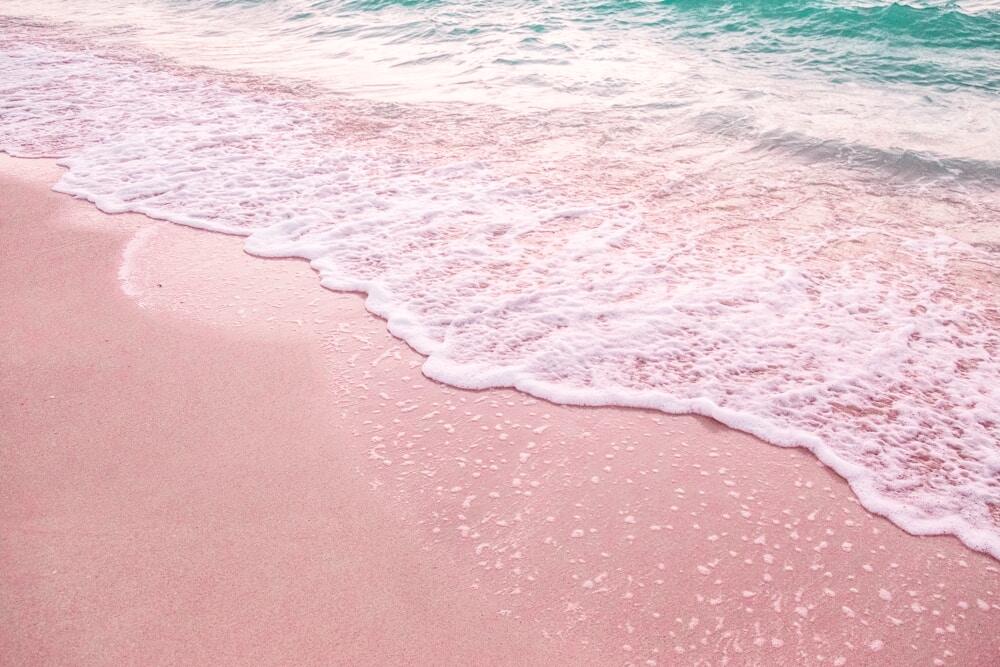
Crane Beach’s pink sand creates one of the most photogenic coastlines in the Caribbean. The contrast against turquoise water looks almost too perfect to be real, but it’s completely natural.
Steel drum performances happen organically on most beaches, especially during sunset. Local musicians play for tips, and the music is so infectious you’ll find yourself dancing without even realizing it.
- Peak season: December through April offers perfect weather
- Temperature: Consistent 84°F compared to Cleveland’s 30°F in February
- Unique feature: The pink sand is found on fewer than 10 beaches worldwide
The rum punches flow freely, mixed with local Mount Gay rum that’s been produced on the island since 1703. Each bar has its own secret recipe.
9. Sri Lanka: Watch Elephants Bathe in Ancient Rivers
Giant elephants wade into flowing rivers, using their trunks like garden hoses to spray water over their backs while baby elephants play nearby in scenes that look straight out of a nature documentary.
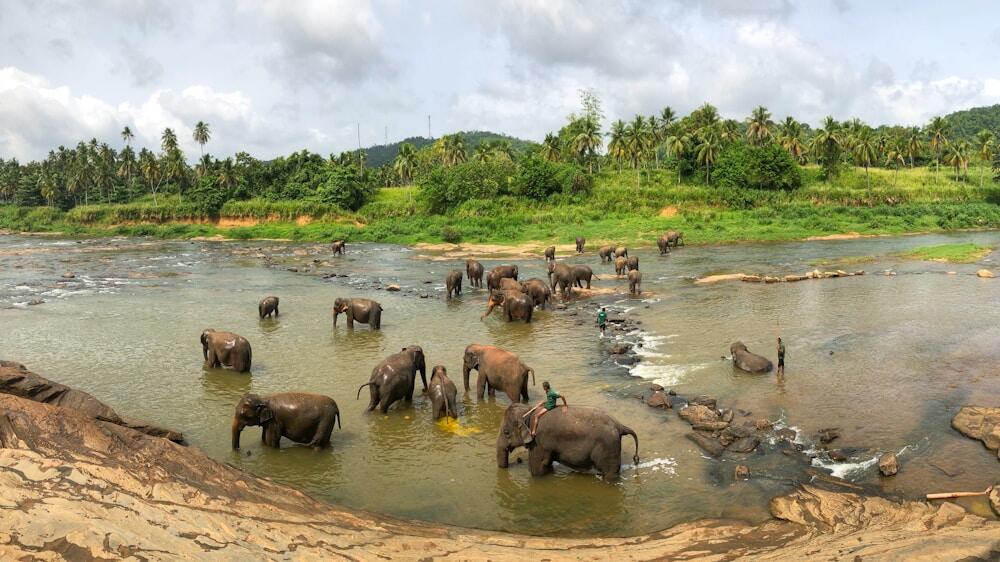
The Pinnawala Elephant Orphanage houses over 90 elephants, and twice daily they all march down to the Ma Oya River for their baths. Watching these gentle giants play in the water creates memories that last forever.
Schedule details:
- Feeding time: 9 AM and 1 PM (baby elephants bottle-feed)
- Bath time: 10 AM and 2 PM
- Entry cost: $8
- Best viewing: Arrive 30 minutes early for good spots
The baby elephants are especially entertaining, splashing and playing while their mothers watch protectively. Some elephants will pose for photos if you’re respectful and keep your distance.
10. Philippines: Island-Hop to Secret Lagoons
A traditional bangka boat carries you through crystal-clear water to hidden lagoons surrounded by towering limestone cliffs, accessible only during specific tide windows that make each visit feel exclusive.
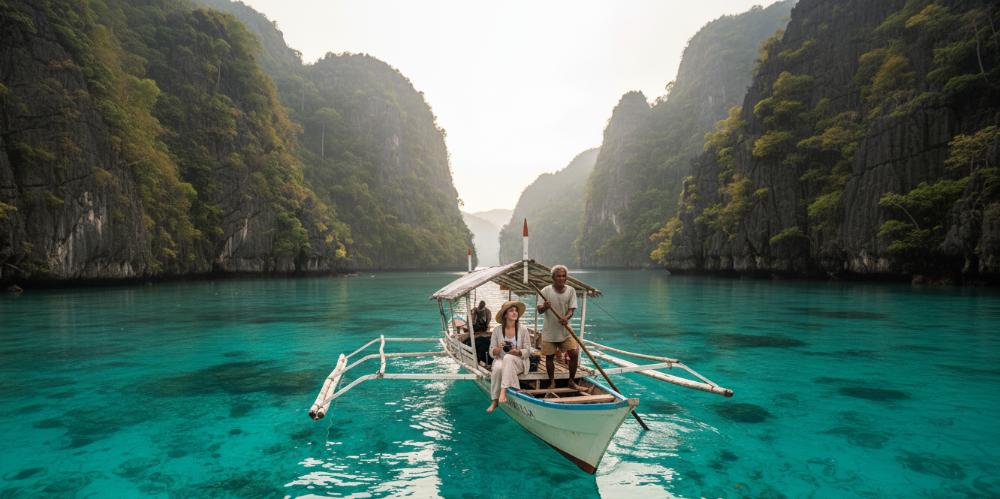
El Nido’s Big and Small Lagoons require kayaking or small boat access during particular tides. The water inside glows an otherworldly blue-green, surrounded by vertical limestone walls covered in thick jungle.
Island hopping tours cost around $25 per person and include lunch, snorkeling gear, and visits to 3-4 different locations. The bangka boats are surprisingly comfortable for full-day adventures.
| Lagoon | Access Method | Best Time | Special Feature |
|---|---|---|---|
| Big Lagoon | Kayak only | Low tide | Cathedral-like acoustics |
| Small Lagoon | Swimming | High tide | Hidden beach inside |
| Secret Lagoon | Small boat | Mid tide | Completely enclosed |
The limestone formations are millions of years old, carved by ocean currents into incredible shapes. Some lagoons are completely enclosed except for small openings you squeeze through.
11. Dubai, UAE: Take Elevators to the World’s Tallest Building
Racing up 124 floors in high-speed elevators to observation decks where you can see the curvature of the Earth and watch commercial airplanes flying below you creates a perspective that’s literally impossible anywhere else.

The Burj Khalifa is so massive it creates its own weather system. The elevators travel at 35 mph, and your ears will pop during the ascent. On clear days, the view spans three countries.
Tip
Book sunset tickets for the most dramatic experience, when city lights start twinkling below and the desert stretches endlessly in every direction. Fast-track tickets cost around $75.
The 148th floor offers the highest public observation deck in the world. Standing there feels surreal, like you’re floating above the planet.
“Looking down at airplanes from the Burj Khalifa completely changed my perspective on what humans can build.” – Engineering student Mike Rodriguez
12. Jamaica: Float Down the Blue Lagoon at Sunset
Drifting on traditional bamboo rafts through water so intensely blue it seems artificial, while your guide shares local legends and the sky transforms into orange and pink above dense jungle canopy.
The Blue Lagoon gets its incredible color from underground freshwater springs mixing with seawater. It reaches 180 feet deep in some areas, and the water temperature stays perfect year-round.
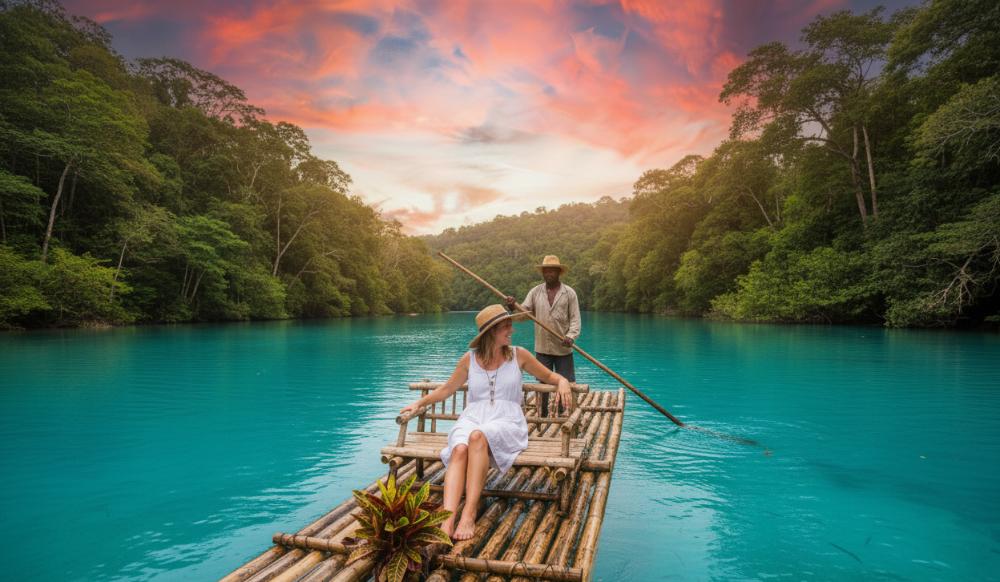
Bamboo raft tours cost around $60 per couple and include a skilled captain who poles you through the lagoon while sharing stories about Errol Flynn’s legendary parties here in the 1940s.
The rafts are surprisingly stable and comfortable, with cushioned seats and sometimes even small tables for drinks. Your captain navigates using a long bamboo pole, a technique passed down through generations.
The lagoon is completely surrounded by jungle, so it feels like you’ve discovered a secret paradise that few people know about.
13. Seychelles: Snorkel with Giant Tortoises
Swimming in crystal-clear water when a gentle giant tortoise, older than your grandmother, gracefully glides past you like a living submarine creates an encounter that feels prehistoric.
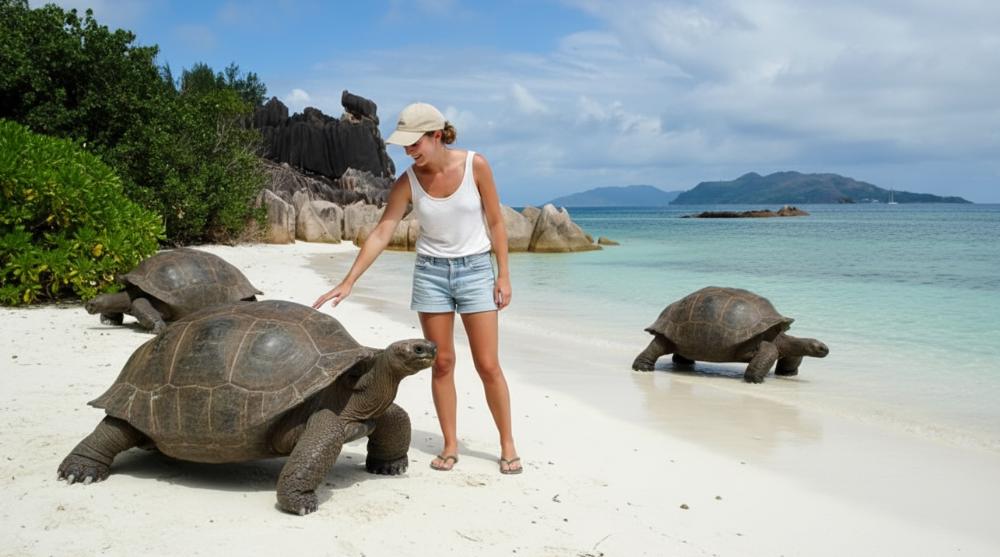
These ancient creatures can live over 150 years, meaning some of the tortoises you’ll swim with hatched before the American Civil War. They move through the water with surprising grace despite weighing up to 500 pounds.
Curieuse Island hosts the largest population of giant tortoises in their natural habitat. Day trips from Praslin cost around $85 and include lunch and guided walks.
- Aldabra giant tortoises are found nowhere else on Earth
- Some individuals are over 100 years old
- They can weigh up to 500 pounds but swim gracefully
- Completely harmless and gentle around humans
The tortoises are completely comfortable around snorkelers and often seem curious about visitors. They’ll swim right up to you, creating incredible photo opportunities.
14. Nicaragua: Surf Perfect Breaks with Zero Crowds
Catching waves on beaches where you might be the only surfer for miles, with consistent swells, warm water, and none of the crowds that plague famous surf destinations.
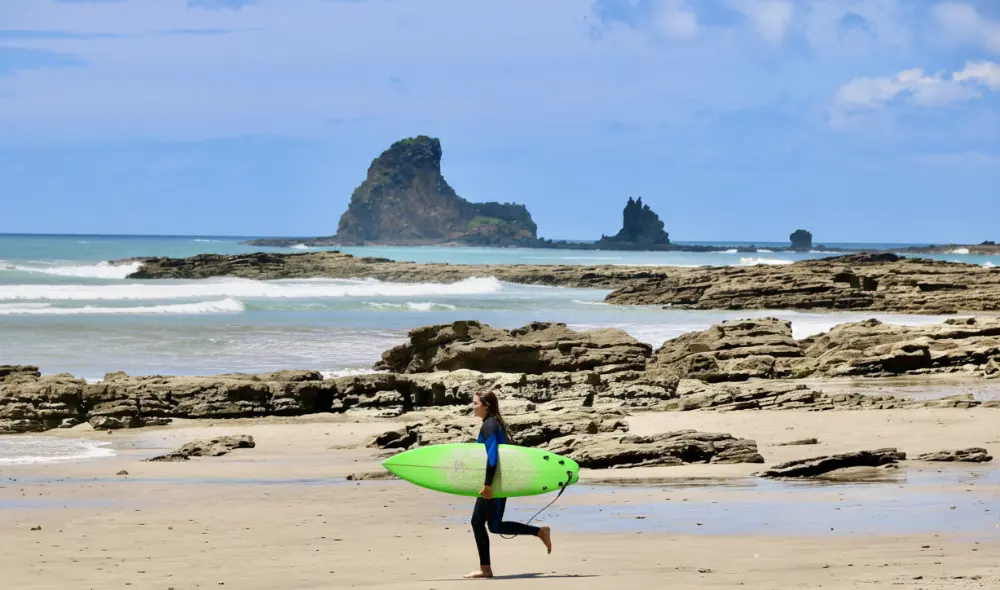
Nicaragua’s Pacific coast offers world-class surfing without the scene. Playa Maderas and Playa Colorado deliver consistent waves year-round, and you’ll often surf alone or with just a few other people.
Surf details:
- Water temperature: 82°F year-round
- Wave height: 3-8 feet consistently
- Crowd factor: Nearly zero
- Board rental: $15/day
- Lessons: $25/hour
The beaches are backed by jungle and volcanic mountains, creating dramatic scenery while you wait for the perfect wave. Local surf shops rent quality boards and offer lessons if you’re just starting out.
Perfect conditions: Nicaragua stays at 85°F while Chicago battles 32°F February temperatures.
Many surf spots are accessible only by 4WD vehicles or boat, which keeps them empty even during peak season.
15. Cambodia: Watch Sunrise Over Ancient Temples
Standing among 800-year-old stone temples as the sun rises and illuminates intricate carvings that tell stories of ancient civilizations creates a spiritual experience that photographs can’t capture.
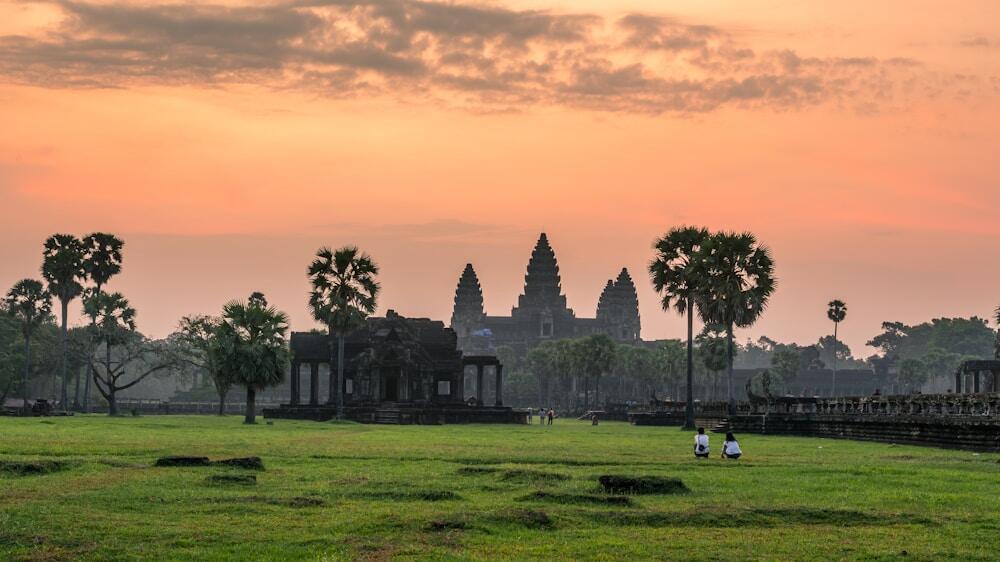
Angkor Wat is just one temple in a complex of over 1,000 ancient structures scattered across 400 square kilometers. Each sunrise reveals different details in the stone carvings that have survived centuries.
Gates open at 5 AM, and the best viewing spots fill up by 5:30 AM. Three-day passes cost $62 and provide access to the entire complex.
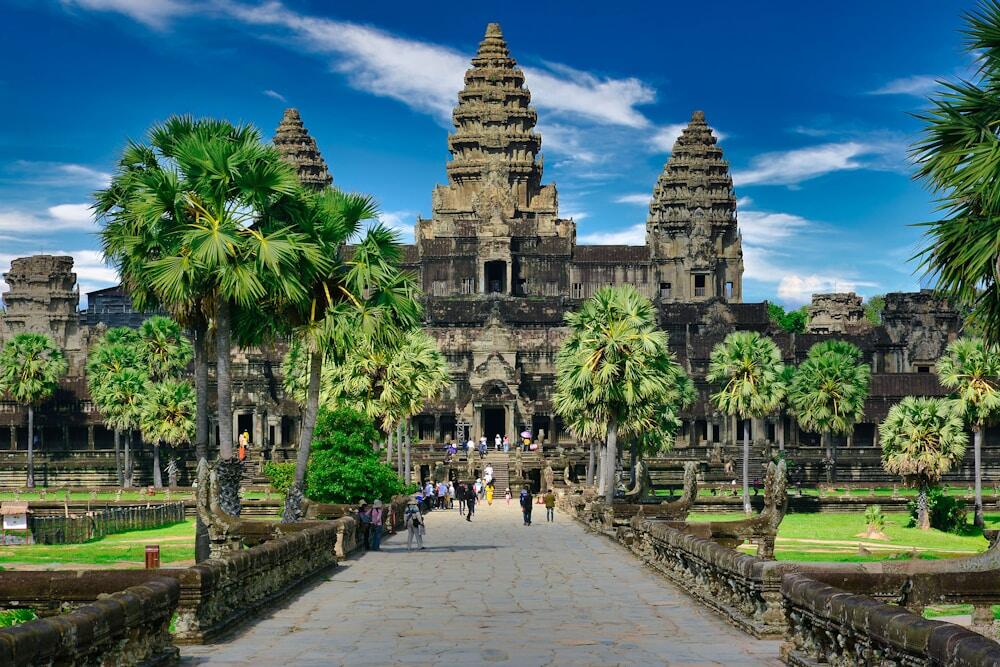
The temples were built between 802 and 1220 AD, making them older than many European cathedrals. The craftsmanship is incredible: intricate bas-reliefs cover nearly every surface.
“Watching sunrise over Angkor Wat made me feel connected to centuries of human history and artistic achievement.” – Art historian Dr. Lisa Park
Different temples face different directions, so you can watch sunrise and sunset from various locations throughout your visit.
16. Oman: Camp in the Desert Under Shooting Stars
Sleeping in traditional Bedouin tents on soft sand dunes while meteors streak across skies so dark and clear you can see the Milky Way with your naked eye creates an otherworldly experience.
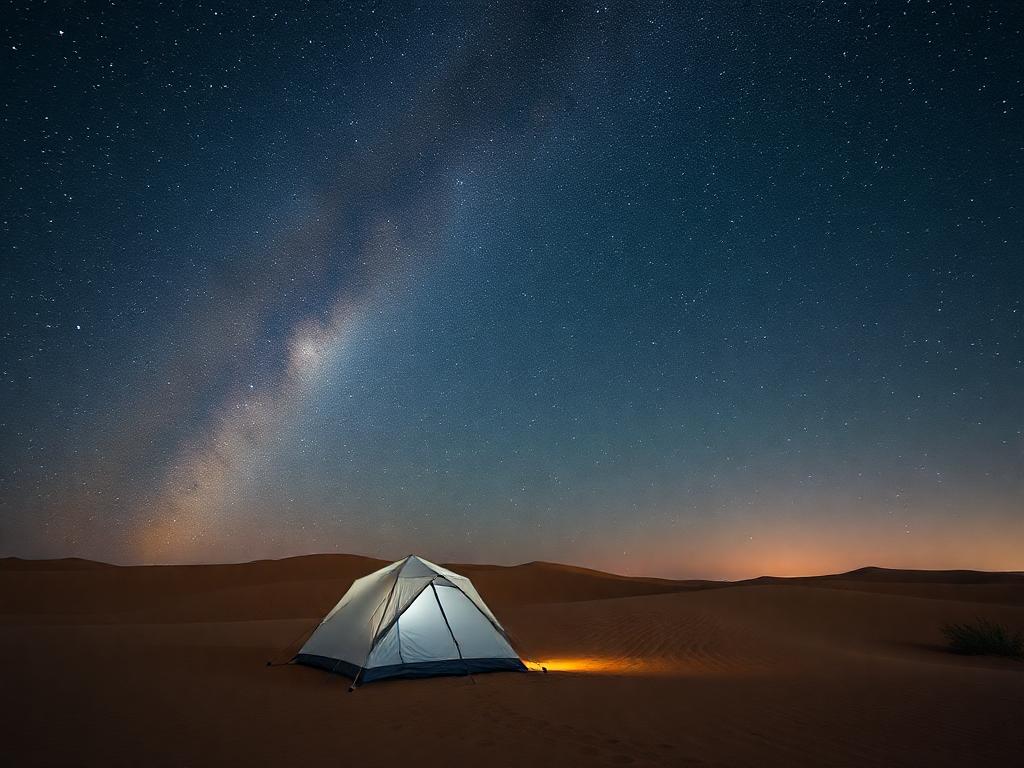
The Wahiba Sands desert offers some of the clearest night skies on Earth due to zero light pollution. Shooting stars are visible almost every night, and the silence is profound.
Desert camping experience:
- Traditional goat hair tents with comfortable bedding
- Campfire dinners with local music
- Camel rides at sunset
- Cost: $120/person including meals
- Best months: November through March
The sand dunes shift constantly, so the landscape looks different every day. Some dunes reach over 100 meters high, and climbing them at sunset provides incredible views.
Your Bedouin guides share stories passed down through generations while preparing traditional meals over open fires.
17. Zanzibar, Tanzania: Swim with Dolphins in Pristine Coral Gardens
Wild dolphins playing in crystal-clear water around you while colorful tropical fish dart between coral formations creates an underwater ballet that feels like swimming in an aquarium.
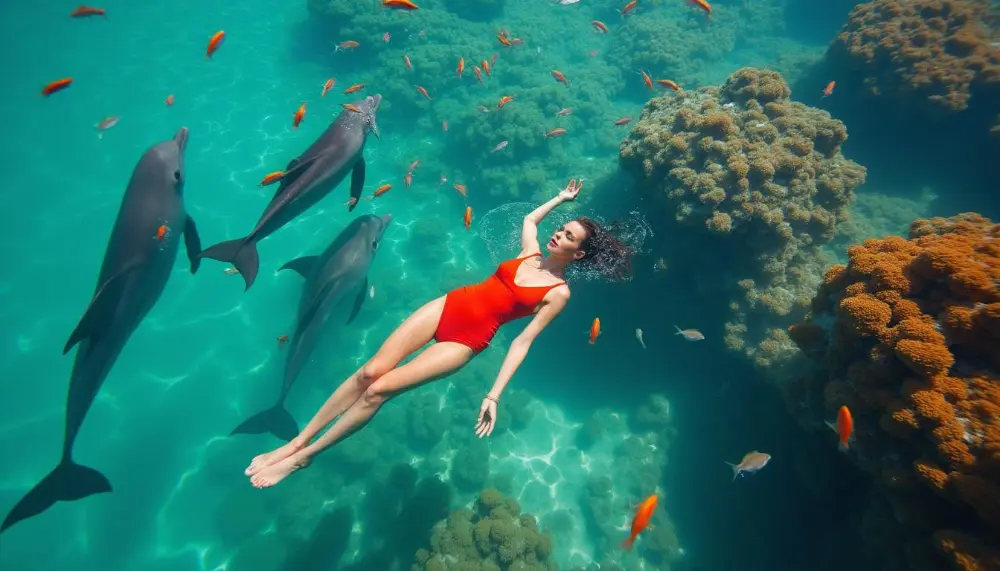
The coral gardens off Zanzibar’s coast support incredible marine biodiversity. Bottlenose and spinner dolphins frequent these waters year-round, and they’re often curious about swimmers.
Half-day trips cost around $45 and include snorkeling gear, lunch, and transportation. Success rate for dolphin sightings is over 90%.
The coral reefs here are among the healthiest in the Indian Ocean, with massive brain corals, colorful soft corals, and tropical fish in every direction you look.
- Best time: Early morning when dolphins are most active
- Water temperature: 82°F year-round
- Visibility: Often exceeds 100 feet
- Marine life: Over 500 fish species
The dhow boats used for these trips are traditional sailing vessels that have been used in these waters for centuries.
18. Myanmar: Float Past Golden Pagodas in Hot Air Balloons
Drifting silently over ancient temple plains in a wicker basket while thousands of golden pagodas catch the morning light below creates views that seem too magical to be real.
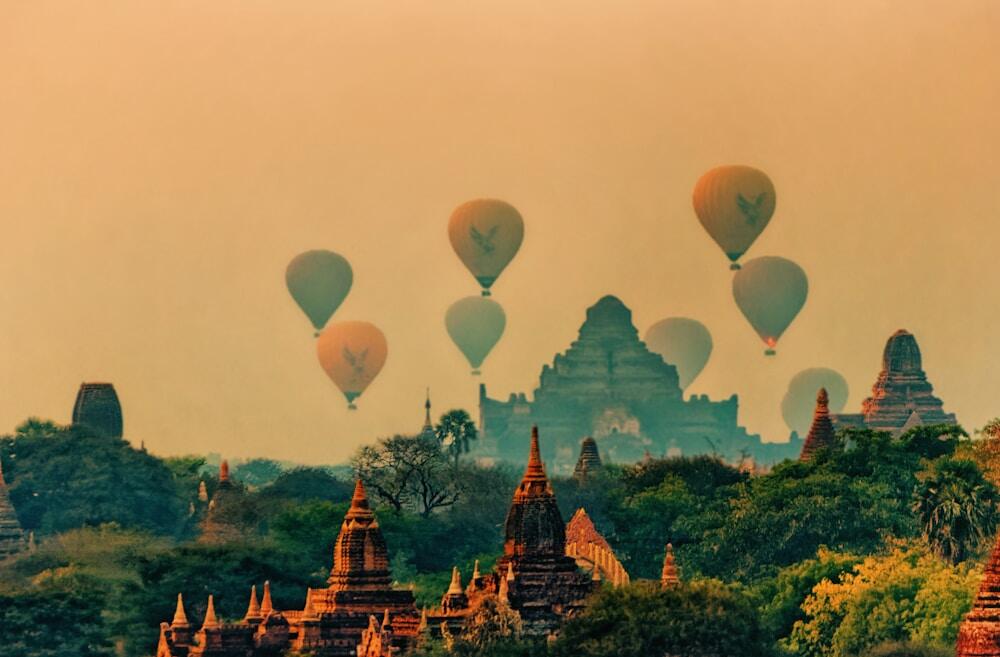
Bagan’s archaeological zone contains over 2,000 ancient pagodas and temples scattered across a vast plain. From a hot air balloon, the scale becomes apparent—these structures stretch to the horizon.
Flights cost around $320 per person and last 45-60 minutes. They operate only during cool months (October through March) when weather conditions are stable.
The temples date from the 11th to 13th centuries, and many contain ancient Buddha statues and wall paintings that are perfectly preserved.

Launch happens before sunrise, and you’ll float over the temples as the golden light illuminates the spires and reveals details invisible from ground level.
After landing, many companies include a champagne breakfast while you watch other balloons drift across the temple plain.
19. Laos: Kayak to Turquoise Waterfalls
Paddling through jungle rivers to reach multi-tiered waterfalls where turquoise water cascades into swimming holes that look like something from a fantasy movie.
Kuang Si Falls features multiple levels of limestone pools filled with the most incredible blue-green water you’ve ever seen. The color comes from dissolved limestone that reflects light in magical ways.
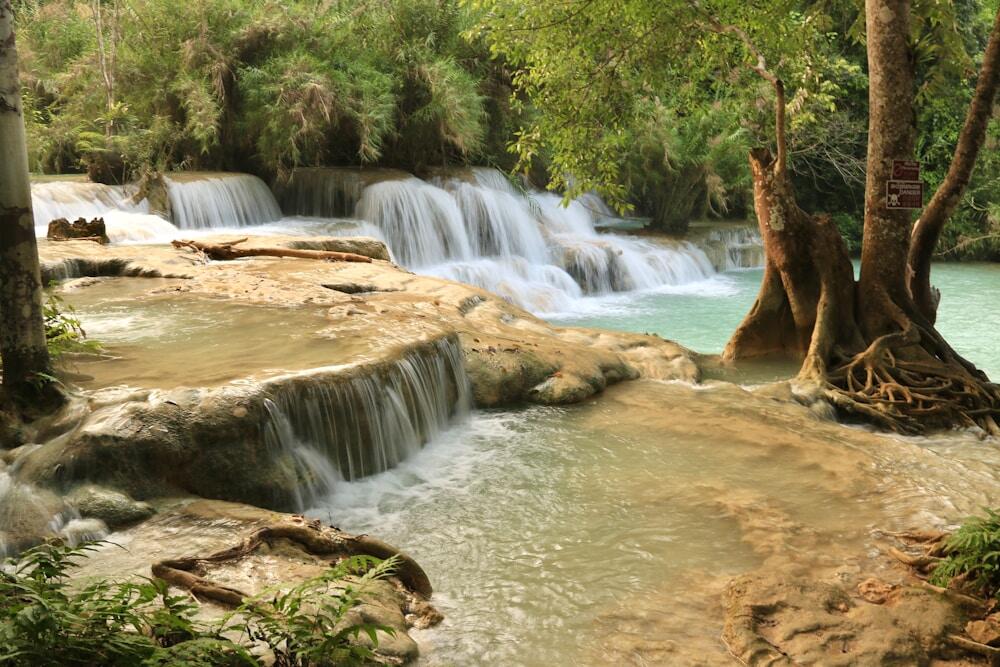
Day trips from Luang Prabang cost around $35 and include kayaking, swimming, and visits to a bear sanctuary. The water temperature stays perfect year-round.
| Waterfall Level | Height | Swimming | Special Feature |
|---|---|---|---|
| Lower pools | 10 feet | Excellent | Rope swings |
| Middle cascade | 30 feet | Good | Photo spots |
| Main falls | 200 feet | No swimming | Incredible views |
You can swim in most of the pools, and some have rope swings for extra adventure. The water is so clear you can see the bottom even in 15-foot-deep pools.
The surrounding jungle is home to Asian black bears that have been rescued from poaching, and you can visit the sanctuary on the same day.
20. Mauritius: Swim in Natural Infinity Pools Carved by Lava
Ancient volcanic activity created natural rock pools filled with crystal-clear ocean water that seems to blend seamlessly with the horizon, like swimming in nature’s own infinity pool.
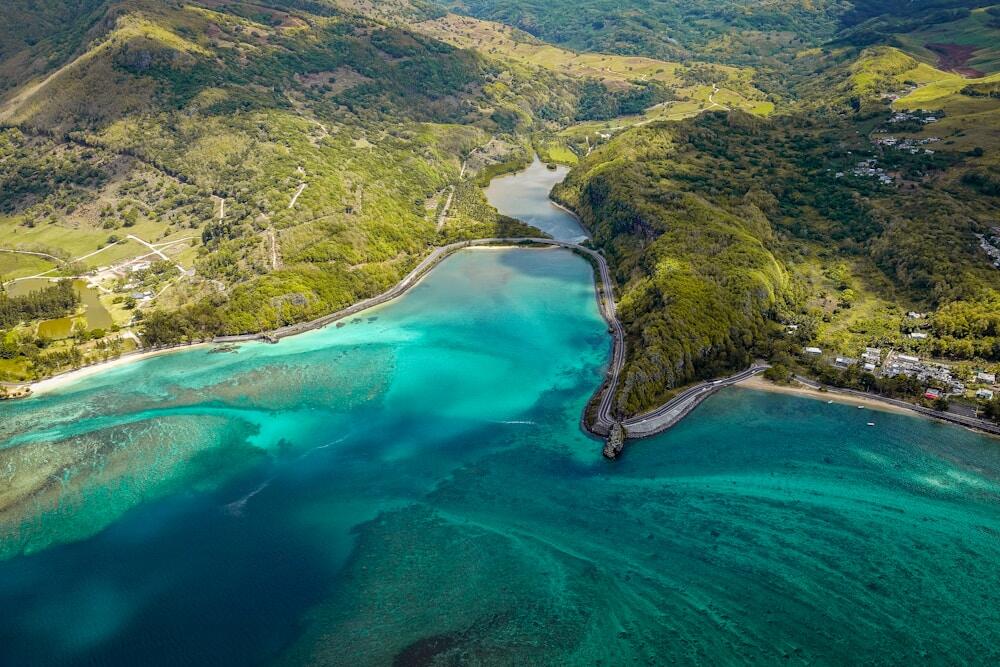
The rock formations at Rochester Falls and other coastal locations were carved by lava flows millions of years ago, then polished smooth by centuries of ocean waves.
These geological wonders are free to access, and each high tide brings fresh ocean water into the pools. The water temperature stays around 79°F year-round.
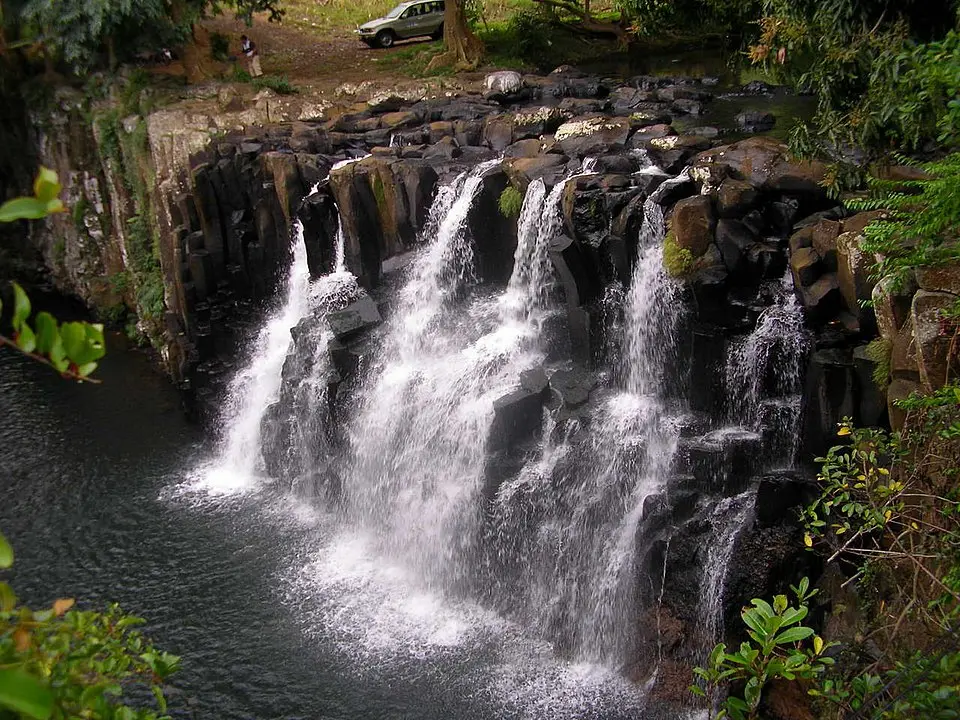
The volcanic rock creates perfect natural diving platforms, and the pools are deep enough for swimming but protected from ocean currents and waves.
- Best locations: Black River Gorges, Rochester Falls, and Gris Gris Beach
- Safety: Pools are naturally protected from strong currents
- Cost: Free access to all natural pools
- Swimming conditions: Excellent year-round
Each pool has its own character: some are perfect for relaxing, others ideal for swimming laps or jumping from rocks.
Hiking through misty rainforests where lemurs with human-like hands and expressive eyes swing through branches just above your head, found nowhere else on Earth.
21. Madagascar: Trek to See Lemurs in Rainforest Canopies
Madagascar split from Africa 160 million years ago, so 90% of its wildlife exists nowhere else on the planet. The lemurs range from tiny mouse lemurs to dog-sized indris with haunting calls.
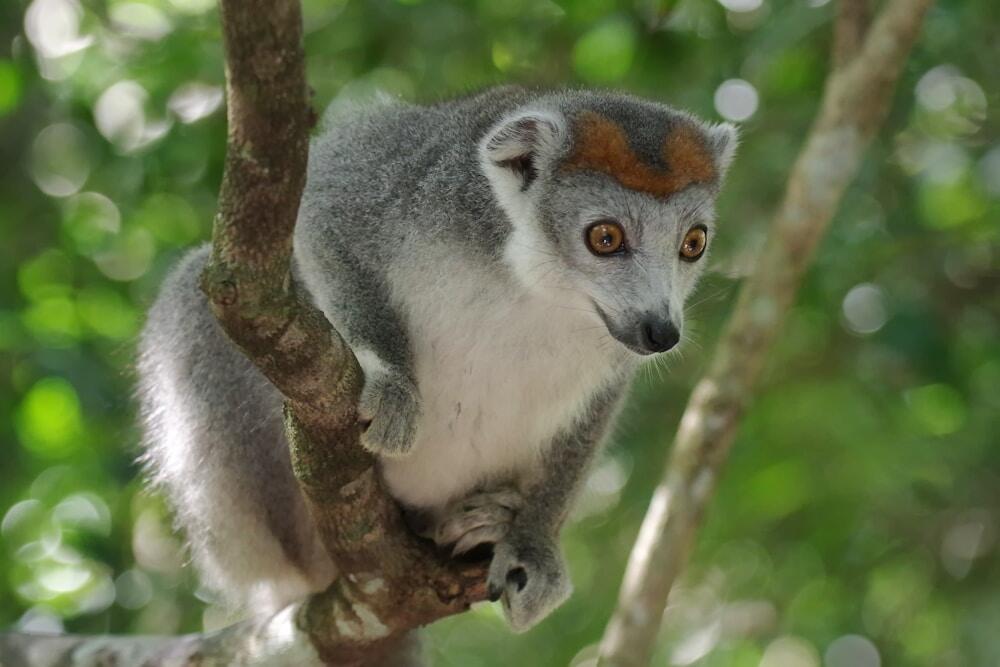
Andasibe-Mantadia National Park offers guided treks starting at $25/person. The indri lemurs are most vocal in early morning, creating an unforgettable natural concert.
The rainforest canopy is so thick it creates its own weather system. Orchids, ferns, and other unique plants grow on every available surface.
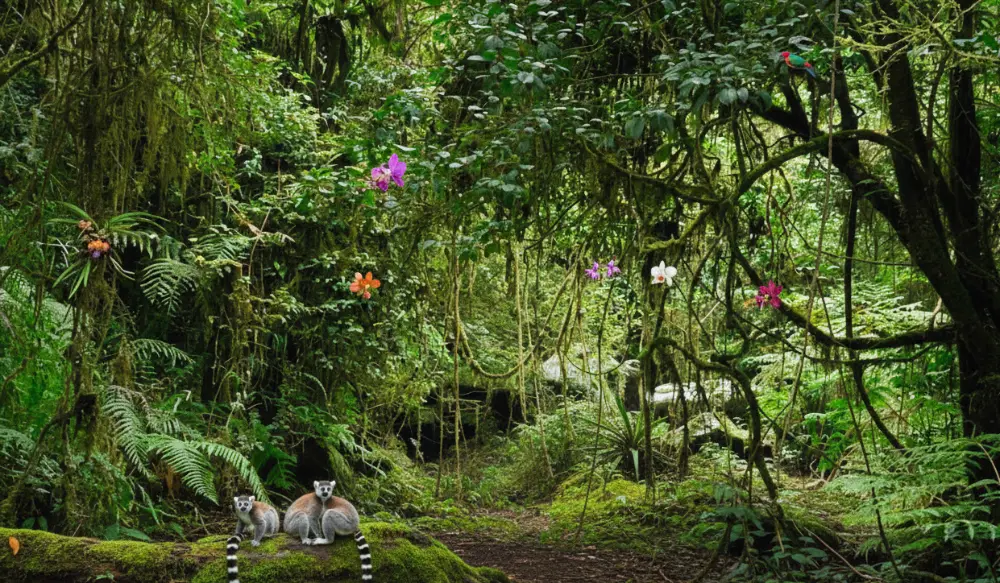
What you’ll see:
- Indri lemurs (largest species) with whale-like songs
- Ring-tailed lemurs with distinctive black and white tails
- Golden bamboo lemurs feeding in morning light
- Over 100 endemic bird species
Local guides can imitate lemur calls to attract them closer, and these animals show little fear of humans when approached respectfully.
22. Qatar: Ride Camels Across Singing Sand Dunes
Swaying on camelback across sand dunes that actually sing, creating low humming sounds as wind moves across their surfaces, while Bedouin guides share desert survival techniques passed down through centuries.

The singing dunes phenomenon occurs when sand grains of specific sizes create resonant frequencies as they shift. It sounds like a distant musical instrument and happens only in certain desert conditions.
Half-day camel treks cost around $85 and include traditional meals, falconry demonstrations, and overnight camping options in luxury tents.
“Hearing the dunes sing while riding a camel made me feel like I’d traveled back in time to ancient trade routes.” – Adventure traveler Tom Wilson
The camels are surprisingly comfortable once you get used to their swaying gait. These animals can walk for hours without tiring and navigate sand dunes that would challenge 4WD vehicles.
Evening camel rides often include traditional coffee ceremonies and stargazing sessions where guides point out constellations used for desert navigation.
23. Fiji: Drink Kava with Village Chiefs
Participating in traditional kava ceremonies where village elders welcome you into their community by sharing this mildly narcotic root drink that creates a sense of peaceful euphoria.
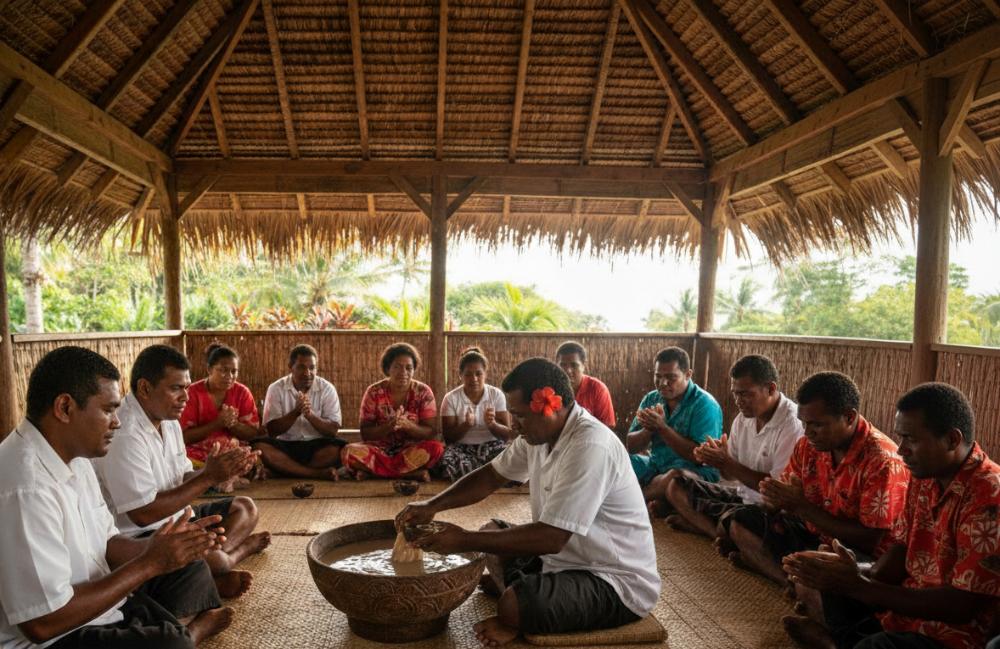
Kava ceremonies are sacred social rituals in Fijian culture. The root is ground and mixed with water in a carved wooden bowl called a tanoa, then shared among participants as a sign of friendship and respect.
Village visits cost around $40/person and include kava ceremonies, traditional meals, and cultural performances. You’ll learn traditional crafts and stories passed down through generations.
The kava creates a mild tingling sensation and promotes relaxation without impairment. It’s been used ceremonially in Pacific islands for over 3,000 years.
What to expect:
- Welcome ceremony with flower leis
- Kava preparation demonstration
- Traditional Fijian feast (lovo)
- Cultural dances and songs
- Handicraft workshops
Village stays are possible on some islands, where you’ll sleep in traditional bures and participate in daily community life.
24. Vanuatu: Stand on Active Volcano Rims
Walking right up to the edge of active volcano craters where lava bubbles and glows just hundreds of feet below, creating one of the most intense natural experiences on Earth.
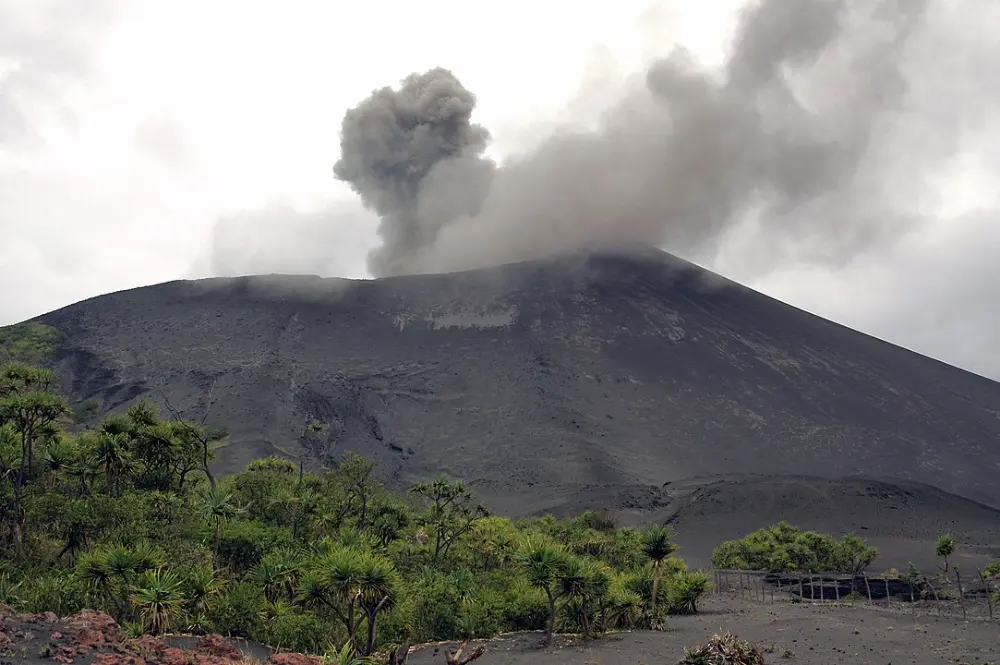
Mount Yasur on Tanna Island is one of the world’s most accessible active volcanoes. It’s been erupting continuously for over 800 years, and you can drive almost to the crater rim.
Day trips cost around $120 and include 4WD transportation, safety equipment, and guided walks to multiple viewpoints. Evening visits offer the most dramatic lava shows.
The volcano erupts every few minutes, shooting glowing lava bombs hundreds of feet into the air. Standing on the rim while this happens creates an adrenaline rush unlike anything else.
Safety measures:
- Experienced local guides monitor activity levels
- Hard hats and gas masks are provided when needed
- Multiple evacuation routes planned
- Weather conditions are carefully monitored
The night visits are most spectacular when you can see the glowing lava against dark skies, but daytime visits let you see the incredible scale of the crater.
25. New Caledonia: Dive the World’s Largest Lagoon
Exploring an underwater world protected by the planet’s second-largest barrier reef, where pristine coral gardens stretch for 1,000 miles and contain marine life found nowhere else.
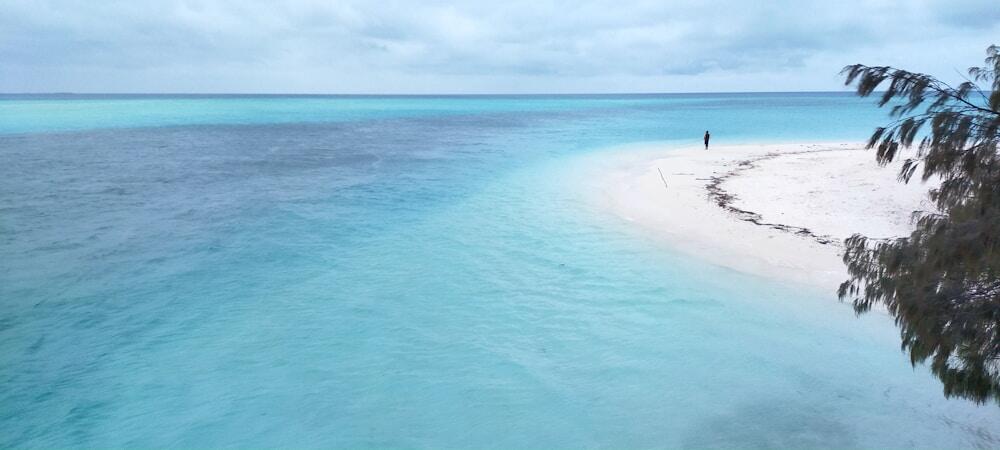
New Caledonia’s lagoon covers 9,300 square miles and contains some of the most diverse marine ecosystems on Earth. The water clarity often exceeds 200 feet, making it perfect for both snorkeling and diving.
Day trips start at $95 and include equipment, lunch, and visits to multiple reef sites. The lagoon contains over 1,500 fish species and 300 coral species.
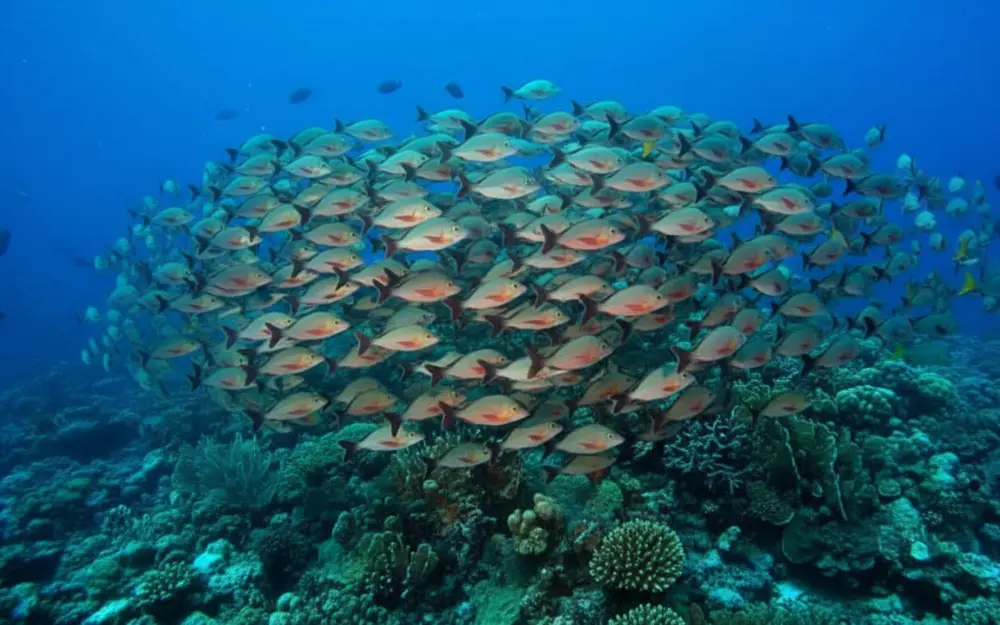
The reef formations include everything from shallow coral gardens perfect for snorkeling to dramatic drop-offs exceeding 3,000 feet deep.
Marine highlights:
- Dugongs (sea cows) grazing in seagrass beds
- Nautilus shells in their natural habitat
- Whale migrations during the winter months
- Endemic fish species found nowhere else
The lagoon was designated a UNESCO World Heritage site for its exceptional biodiversity and pristine condition.

